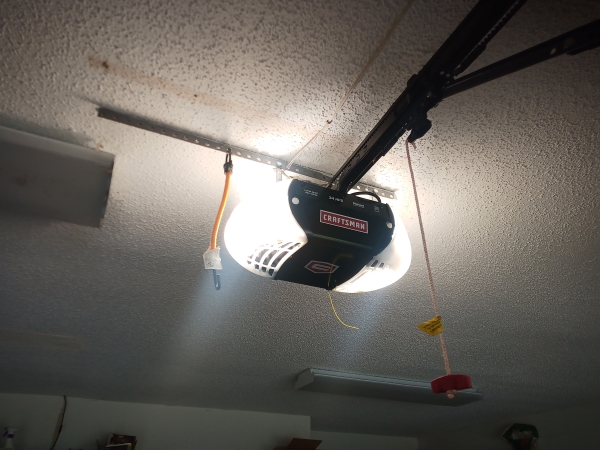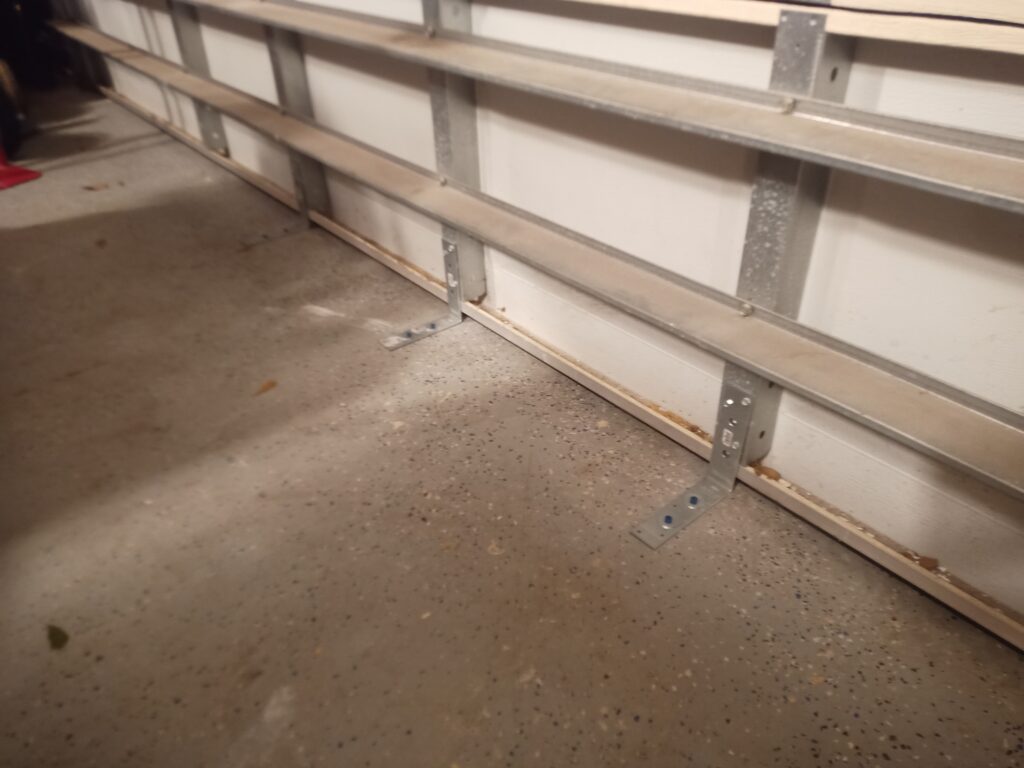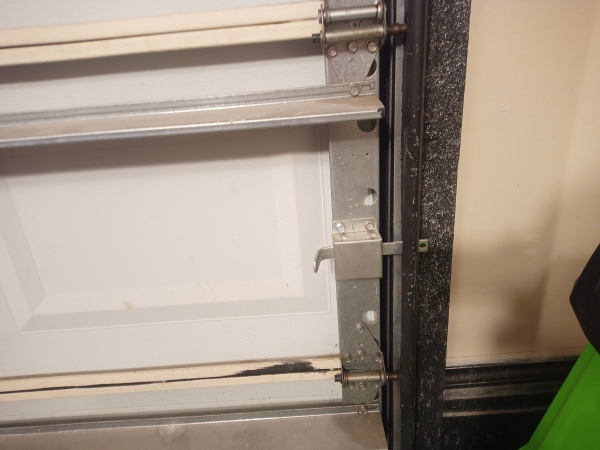How to Prepare Your Garage Door for a Hurricane: Backup Power, Securing the Door, and Enhancing Security
During a high wind event storm, such as a hurricane, flying debris can cause direct damage to a garage door or high winds alone can cause the door structure to buckle and fail.
Once the door is breached, loose debris such as broken glass, tree branches, or pieces of roofing material can enter the garage or the home, causing additional damage to both your property and your personal belongings.
When high winds enter through a damaged garage door, they can cause significant pressure buildup inside the house. This wind can push against the walls and roof, potentially causing structural damage. In some cases, the wind can even make its way further into the home if the door leads directly into living areas. The pressure differential between the inside and outside of the home can make the structure more vulnerable to collapse or severe damage.
For all of these reasons above, I hope you can see the importance of taking additional steps to prepare and secure your garage door during a high wind event.
Following the steps provided within this article will teach you helpful tips on how to prevent storm damage, safeguarding your loved ones and your property.
In this article, we’ll focus on three key aspects to ensure your garage door stands up to hurricane conditions: emergency backup battery power, securing the bottom of the door, and enhancing security with a garage door latch.
Preparing Your Garage Door with Backup Battery Power

When the power goes out during a hurricane, many homeowners rely on their garage door opener to secure their vehicles and get inside their homes. However, during a storm, it’s helpful to have a garage door which can be opened without using the manual release, this can be achieved by having a garage door operator which has emergency battery backup capabilities.
Selecting a Garage Door Opener with Backup Battery Power
When purchasing a garage door opener, choose one that is equipped with a backup battery. Many modern openers come with this feature, but it’s important to check before you make a purchase. A battery backup system ensures that your garage door will still operate even if there’s a power failure, which is essential when you need to leave in a hurry or return home during or after a storm.
Look for garage door openers that feature:
- Automatic switch-over: The opener should automatically switch to battery power when the main power supply is cut off.
- Long-lasting battery: Make sure the battery is designed to last for several cycles of opening and closing the door, which is especially important during a storm where power outages may last for days.
Checking Your Backup Battery’s Voltage
Once you have a garage door opener with a backup battery installed, it’s essential to regularly check that the battery is working correctly. Follow these simple steps to ensure the backup system is ready when you need it most:
- Turn off the power: Disconnect the power supply to the garage door opener either by switching off the breaker or unplugging it.
- Test the door: Try to open and close the garage door using the remote or wall switch. If the opener runs smoothly without any issues, the backup battery is functioning correctly.
- Check battery voltage: Some garage door openers have a diagnostic feature that will display the battery’s current charge level. If not, you can use a multimeter to check the voltage of the backup battery. A voltage reading significantly lower than the recommended value means it’s time to replace the battery.
- Replace the battery if necessary: If the backup battery is not holding a charge or is too old, replace it well before hurricane season.
Having a functioning backup battery will give you peace of mind knowing that you can open and close your garage door in an emergency, even when there’s no power.
Securing the Bottom of Your Garage Door with Metal L Brackets
Ahead of Hurricane Milton’s 102 mph winds, I installed metal L brackets and screws to secure the bottom of my garage door. When the storm passed, I found the screws bent, showing how much pressure the door had withstood. The brackets held strong, preventing major damage.
This simple, low-cost preparation made a huge difference. I highly recommend this method to any prepper — it’s a small investment that can save your home from more serious storm damage.
One of the most critical areas to secure during a hurricane is the bottom of your garage door. High winds can lift a poorly secured door, potentially leading to structural damage to the garage. Fortunately, there is a simple solution: metal L brackets and metal screws to temporarily secure the door in place.

Materials Needed:
- Metal L brackets (at least 3 brackets, depending on the width of the door)
- Metal screws: long enough to penetrate the door frame, for this project we used 1″ self tapping hex head screws
- Masonry Screws: at least 2″ to provide enough holding force
- Washers (if necessary)
- Hammer Drill with masonry drill bit
Installation Steps:
Position the L Brackets: Start by closing the garage door and placing the L brackets along the bottom of the garage door, aligned with the vertical members. They should be spaced evenly across the width of the door. Make sure the brackets are positioned so that one side will be screwed into the concrete floor and the other will be secured against the door’s bottom edge.
Drill Pilot Holes: Using a masonry bit, drill pilot holes into the concrete floor where the brackets will be attached. This will make it easier to install the screws.
Install the L Brackets: Attach the L brackets to the bottom edge of the door using metal screws.
Secure the Brackets to the Floor: After securing the brackets to the door, insert screws into the holes in the cement and tighten them slightly.
Test the Door: Once fully installed, test the cement screw holding power. If sufficient, remove all the cement screws from the brackets and continue to prepare for the storm.
- Arrival of Winds: When the winds have begun to arrive and you no-longer require use of your garage door, re-install the cement screws and fully secure brackets.
This simple method of securing the bottom of your garage door provides added stability during hurricane conditions and ensures that your garage remains sealed and protected.
Project Supplies List:
Consider Using Our AMAZON© AFFILATE LINKS, we receive a commission when you use our links!
Why and How to Install a Garage Door Latch Lock

In addition to storm protection, securing your garage door during an evacuation is also critical for protecting your property. A garage door latch provides an extra layer of security, ensuring that the garage cannot be easily opened or tampered with by intruders when you’re away.
Why a Garage Door Latch is Important
Garage doors are often one of the most vulnerable entry points in a home, especially if the garage leads directly into the living area. If you’re evacuating your home or leaving it for an extended period, a latch provides a simple but highly effective way to prevent burglars from gaining access.
How to Install a Garage Door Latch
Installing a garage door latch is a relatively straightforward process:
Materials Needed:
- Heavy-duty garage door latch
- Drill
- Screws
- Tape measure
Installation Steps:
Choose a Latch: Select a latch that is durable and designed for garage doors. There are many types of latches available, including slide bolts, lockable pins, or padlocks with heavy-duty brackets.
Measure the Position: Measure the position where the latch will be installed on the inside of the garage door. Typically, it will go at the top or bottom of the door.
Drill the Holes: Drill the necessary holes in both the door and the frame where the latch will be installed.
Attach the Latch: Using screws, attach the latch to the door and frame. Make sure it’s secure and functions properly by testing it to ensure it latches and locks correctly.
Secure the Lock: For additional security, consider installing a heavy-duty padlock or lockable pin on the latch to prevent unauthorized access.
Project Supply List:
Increased Risk of Break-ins
Preparing your garage door for a hurricane involves more than just securing it from high winds — it’s also about ensuring you can safely access your home during an emergency, and protecting it from intruders. Remember, a little preparation goes a long way in keeping your family and home safe during storm season.
If your garage door is severely damaged or left unsecured after a storm, it may provide an easy entry point for burglars. This opens the door to potential theft, and in worst-case scenarios, may allow intruders to access your home directly.
Preparing your garage door for a hurricane is a simple and cost-effective investment that can save you time, money, and potential damage down the road. By taking a few basic steps, you can ensure your home stays secure and accessible during an emergency, while also protecting it from the risks posed by high winds and intruders.
The small amount of time and money spent on preparing your garage door pales in comparison to the potential costs and dangers of not being properly prepared. Simple measures like reinforcing the door, securing it with a latch, and ensuring backup power can make a significant difference in safeguarding your home and your family when a storm strikes.




